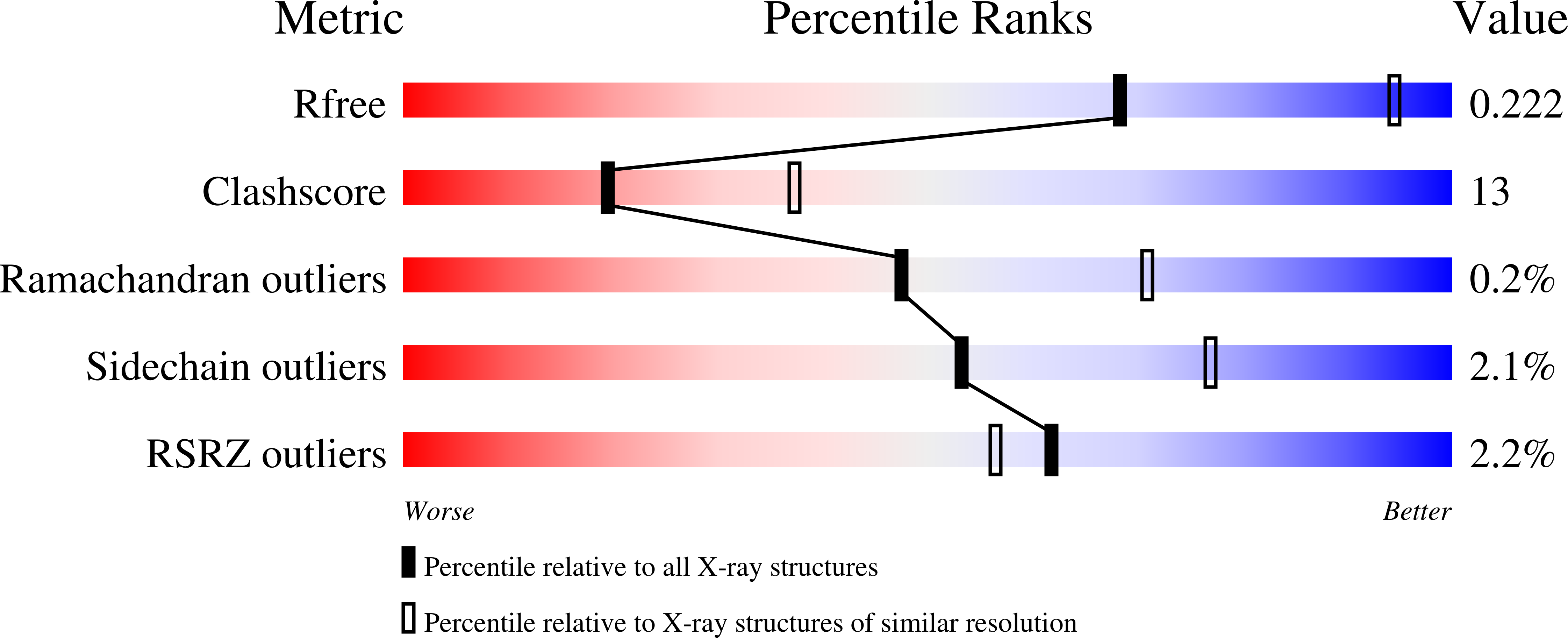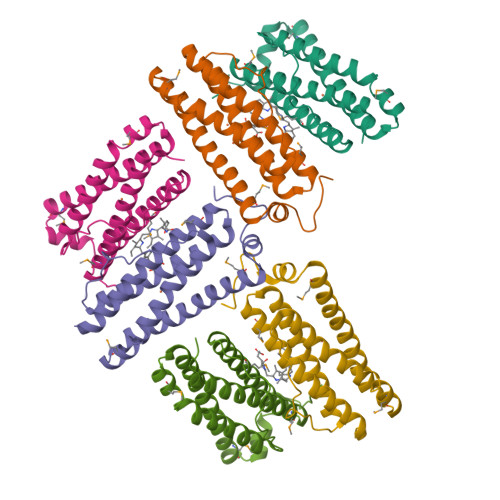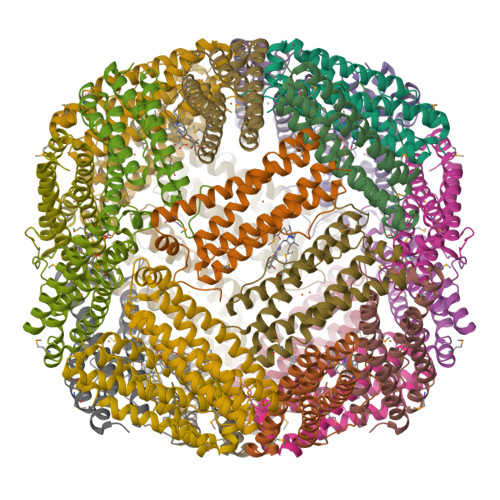Crystal Structure of Bfra from Mycobacterium Tuberculosis:Incorporation of Selenomethionine Results in Cleavage and Demetallation of Haem
Gupta, V., Gupta, R.K., Khare, G., Salunke, D.M., Tyagi, A.K.(2009) PLoS One 4: E8028
- PubMed: 19946376
- DOI: https://doi.org/10.1371/journal.pone.0008028
- Primary Citation of Related Structures:
2WTL - PubMed Abstract:
Emergence of tuberculosis as a global health threat has necessitated an urgent search for new antitubercular drugs entailing determination of 3-dimensional structures of a large number of mycobacterial proteins for structure-based drug design. The essential requirement of ferritins/bacterioferritins (proteins involved in iron storage and homeostasis) for the survival of several prokaryotic pathogens makes these proteins very attractive targets for structure determination and inhibitor design. Bacterioferritins (Bfrs) differ from ferritins in that they have additional noncovalently bound haem groups. The physiological role of haem in Bfrs is not very clear but studies indicate that the haem group is involved in mediating release of iron from Bfr by facilitating reduction of the iron core. To further enhance our understanding, we have determined the crystal structure of the selenomethionyl analog of bacterioferritin A (SeMet-BfrA) from Mycobacterium tuberculosis (Mtb). Unexpectedly, electron density observed in the crystals of SeMet-BfrA analogous to haem location in bacterioferritins, shows a demetallated and degraded product of haem. This unanticipated observation is a consequence of the altered spatial electronic environment around the axial ligands of haem (in lieu of Met52 modification to SeMet52). Furthermore, the structure of Mtb SeMet-BfrA displays a possible lost protein interaction with haem propionates due to formation of a salt bridge between Arg53-Glu57, which appears to be unique to Mtb BfrA, resulting in slight modulation of haem binding pocket in this organism. The crystal structure of Mtb SeMet-BfrA provides novel leads to physiological function of haem in Bfrs. If validated as a drug target, it may also serve as a scaffold for designing specific inhibitors. In addition, this study provides evidence against the general belief that a selenium derivative of a protein represents its true physiological native structure.
Organizational Affiliation:
Department of Biochemistry, University of Delhi South Campus, New Delhi, India.



















